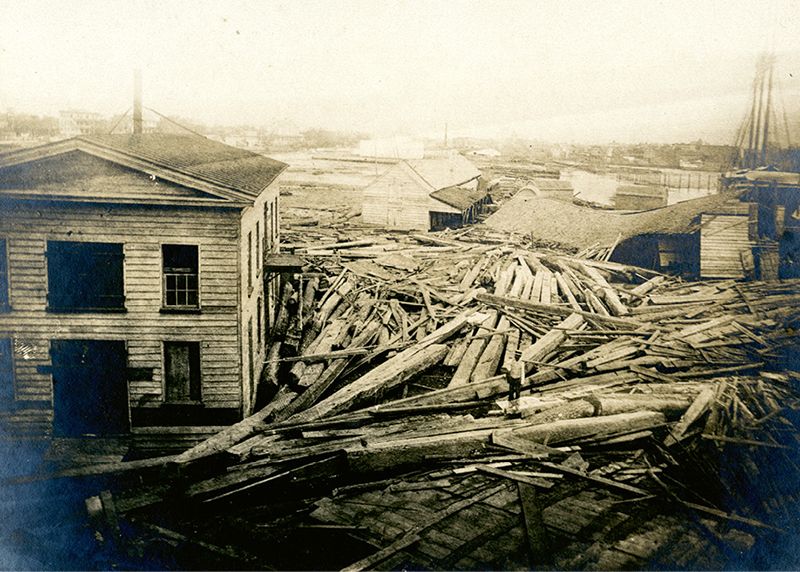
Destruction at a local mill after the 1911 hurricane
Hurricanes weren’t yet given official names in 1911. So the storm that hit on August 27 of that year, though it brought untold devastation, might only have been remembered chronologically. Ships came ashore, waves swamped the lower peninsula, and St. Michael’s steeple swayed. The sea rose so high that, upriver, rice crops were ruined and infrastructure destroyed, thus ending a 200-year-old industry.
It seemed, said some in the African American community, that God was wreaking vengeance. And that’s how this hurricane earned a name: “The Duncan Storm,” for Daniel Duncan, whom many considered wrongly convicted of killing merchant Max Lubelsky in 1910. Duncan was black; Lubelsky, white. The accused was hanged on July 7, 1911 (the last public hanging at the city jail), and many predicted divine retribution for justice miscarried.
While that memory may have faded over the years, the storm has gone from infamy to fame, enshrined by DuBose Heyward as the cataclysmic event that brings catharsis and retribution on the denizens of Catfish Row in his novel Porgy. Today, it’s reprised around the world in the opera Porgy and Bess.
Photograph courtesy of The Charleston Museum